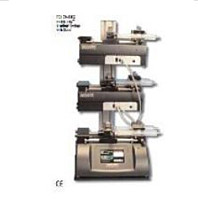Characterization of Synthetic Gene Delivery Vectors by Infrared Spectroscopy
互联网
440
For many decades, infrared (IR) spectroscopy has been used to characterize the structure of molecules. In IR spectroscopy, absorption of light, corresponding to vibrational and rotational transitions of a molecule, is measured. For a transition to be IR-active, a change in the dipole moment of a particular bond must occur upon excitation. This vibrational energy is not only dependent on the chemical nature of the particular covalent bonds, but also on the environment of these coupled atoms and bonds. IR spectroscopy has been previously employed in the study of the structure of nucleic acids, producing not only information about the individual bases, sugars, and phosphate backbone, but also providing information about the helical conformation of polynucleotides (1 -3 ). IR spectroscopy has also been successfully applied to the analysis of lipids, as well as to numerous other polymers (4 ). Thus, IR spectroscopy potentially possesses the ability to obtain structural information about all of the components of most synthetic gene delivery complexes, as well as changes in the structure of polymeric or lipid components upon complex formation. In addition to the ability to gather detailed structural information, there are also some practical advantages to the use of IR spectroscopy for the study of plas-mid DNA and DNA complexes compared to other techniques, including the availability of a variety of sampling techniques, permitting the analysis of samples in a wide variety of physical states including solutions, solids, and gels. There is also no upper limit to the size of the sample molecule examined, allowing both short oligonucleotides and higher molecular weight DNA to be studied. IR spectroscopy is not a destructive technique, and requires only small amounts of material, making it ideal for the analysis of valuable samples.









